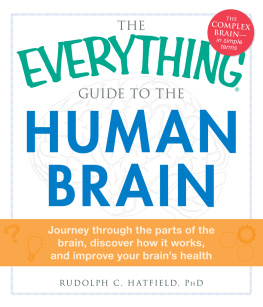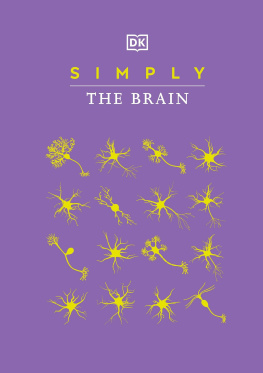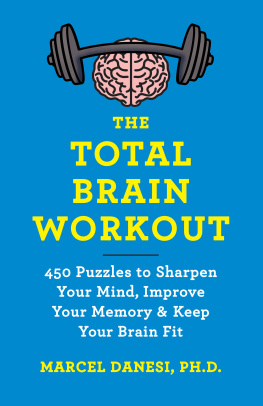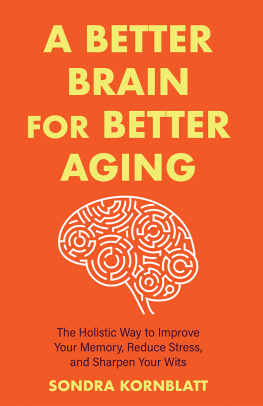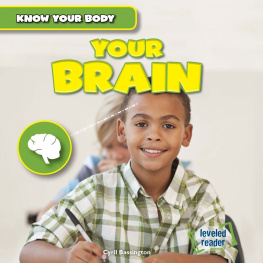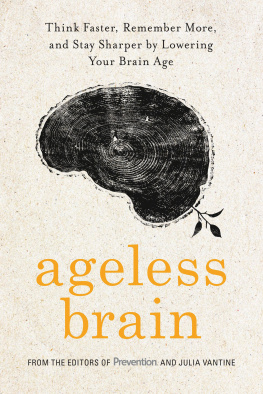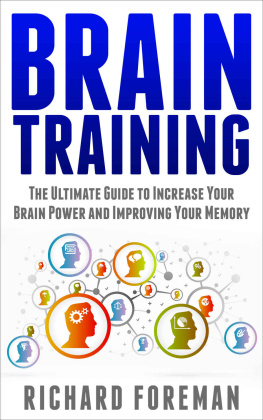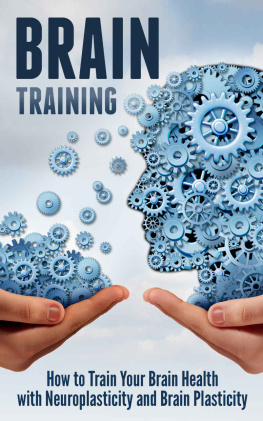Rudolph C. Hatfield, PhD
THE
EVERYTHING
GUIDE TO THE
HUMAN BRAIN
Dear Reader,
My vision for this project was to create an easy, straightforward, and nontechnical guide that could explain what we know about how the brain functions. My intent was not to create a textbook, and this book would certainly not be appropriate as a text for a college course, but it might be an appropriate supplement to a textbook for a course in biological psychology.
Nonetheless, it is extremely hard not to get a little technical when discussing the brain; it is my hope that the explanations in this book are straightforward. While the book is accurate according to our current understanding of the brain, it is still very general in nature and any single chapter could be expanded to the point of being a full-length book on its own.
When writing this book, I decided to use as close to a casual conversational tone as possible. That decision may have resulted in some rambling and other foibles that I exhibit personally, but hopefully the tone of the book allows readers to understand it better. If you read this book and come away with an understanding and appreciation of just how complex the human brain is, then I have done my job.

Welcome to the EVERYTHING Series!
These handy, accessible books give you all you need to tackle a difficult project, gain a new hobby, comprehend a fascinating topic, prepare for an exam, or even brush up on something you learned back in school but have since forgotten.
You can choose to read an Everything book from cover to cover or just pick out the information you want from our four useful boxes: e-questions, e-facts, e-alerts, and e-ssentials. We give you everything you need to know on the subject, but throw in a lot of fun stuff along the way, too.
We now have more than 400 Everything books in print, spanning such wide-ranging categories as weddings, pregnancy, cooking, music instruction, foreign language, crafts, pets, New Age, and so much more. When youre done reading them all, you can finally say you know Everything!

PUBLISHER Karen Cooper
MANAGING EDITOR, EVERYTHING SERIES Lisa Laing
COPY CHIEF Casey Ebert
ASSISTANT PRODUCTION EDITOR Mary Beth Dolan
ACQUISITIONS EDITOR Brett Palana-Shanahan
SENIOR DEVELOPMENT EDITOR Brett Palana-Shanahan
EVERYTHING SERIES COVER DESIGNER Erin Alexander
Visit the entire Everything series at www.everything.com
This book is dedicated to my family for putting up with all my antics for all these years.
Contents
Acknowledgments
I have many people to thank for contributing to the information in this book. None of them have contributed directly, but instead have influenced or taught me over the years. I would like to acknowledge all my professors at the University of Michigan and Wayne State University for their wonderful teaching and patience with me as a student so long ago. However, I really need to thank the thousands of patients with brain injuries, neurological disorders, psychiatric disorders, and other brain-related problems whom I have assessed or treated over the years. It is from you that I have learned more than I ever could have learned in the classroom. God bless you all.
The Top 10 Fascinating Facts About Your Brain
- Your brain is forever changing. The ability of the brain to respond to experience and physical change is called plasticity.
- You have holes in your brain. There are four spaces in the brain called ventricles that protect the brain from extreme pressure, such as that caused by head trauma.
- Your brain is the original 3-D. Your eyes transmit small, inverted two-dimensional images to your brain, and your brain fills in missing information and creates three-dimensional images.
- Your working memory can only hold about five to nine chunks of information, and its typical duration is about thirty seconds.
- The perception of pain is paradoxical. In certain circumstances your brain can actually block the perception of pain and allow you to continue with an action.
- Everyone dreams, even those people who claim they dont. Dreams are an attempt by your brain to make sense of the mass of information sent to it during REM sleep.
- The frontal cortex displays the most prolonged development of all brain areas, not becoming mature until adolescence.
- Attention is among the most sensitive of cognitive abilities. Difficulties with attention and concentration are some of the most common problems associated with disorders such as depression or anxiety.
- Only a small percentage of all brain activity actually reaches conscious awareness.
- Your memory is not a tape recorder. When you recall memories, your brain must actually re-create them. This re-creation is subject to outside influences (context, suggestion, emotional states, etc.) and can alter the memory of past events.
Introduction
THE 1980s WERE DESIGNATED as the decade of the brain. At that time fields like cognitive science, neuroscience, and other areas of brain-related study were flourishing, and it was believed that the period between 1980 and 1990 would reveal the inner workings of the human mind. Well that decade has come and gone and advances in understanding the brain have not ceased. Looking back on those years, it seems like the more that scientists learned, the more they realized that they did not understand. Science has not even begun to understand the brain. That makes writing this book all the easier because, in reality, each chapter could simply state, No one really understands how the brain does this, and this would be the most accurate book on brain-functioning written.
Nonetheless, science has made some exciting progress in understanding how the brain may work. Unfortunately much of this progress can be lost on those who do not have extensive backgrounds in biology, anatomy, neuroscience, and psychology. While it is necessary to have a very basic understanding of these fields in order to understand the brain, it certainly is not necessary to be an expert in any one of them. This book attempts to allow someone without expertise in neuroscience to understand how her brain works and how the brain organizes sensation, perception, thinking, and feeling.
The human brain is the most complicated entity (for lack of a better word) in the entire universe. The human brain has the capacity to perform functions that, as far as science knows, cannot be performed by any other animal or by any machine. This book attempts to explain the basic functions of the brain without using complicated computer analogies and endless neuroanatomical drawings and pictures. Computer models can be useful in understanding how neural networks signal and code information, but this book does not attempt to provide a reductionistic viewpoint of behavior. Instead, this book looks at the top-down processes of brain functioning. References allowing for more in-depth examinations of topics are provided at the end of the book, and there is a glossary at the end of the book with links to websites that enhance the book material. The motivated reader will hopefully investigate these.

